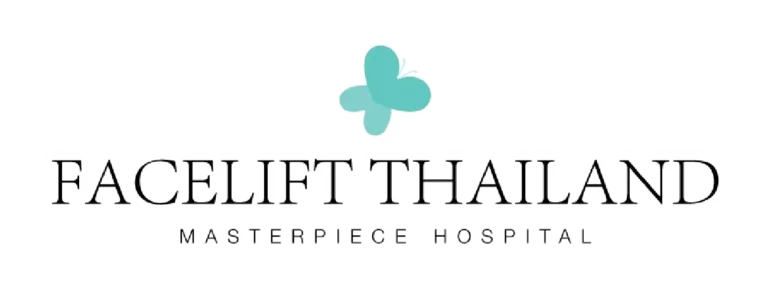What type of nose is suitable for silicone rhinoplasty? How does the shape of your silicone affect your nose shape?
Silicone rhinoplasty (Nose Surgery)
Rhinoplasty is a popular procedure among individuals of Asian descent, as they often have lower nose bridges compared to Europeans. Silicone rods can be used to create a higher nose bridge. The enhancements must be balanced with the rest of the face, ensuring that the new shape looks natural and harmonious with the overall facial features.

Important considerations about Silicone Rhinoplasty
Close rhinoplasty uses synthetic materials, such as nasal silicone, inserted through small incisions inside the nostrils. This technique is simple, convenient, and quick, making it ideal for patients who already have a relatively good nose shape, such as a nasal base that is not too wide, a bridge that is not too flat, and a nose that is straight with balanced proportions—not too long or short. If the nose length is appropriate, it can be enhanced with silicone. However, this method is not suitable for individuals with a short nose.
Pros
- It’s a simple technique. Takes a short time for rhinoplasty.
- No general anesthesia was used. Since the surgery involves an incision in only one nostril, local anesthesia was administered to minimize pain.
Cons
- It’s not suitable for individuals with a short nose.
- The nasal structure can’t be completely adjusted.
Rhinoplasty materials
The silicone used is medical-grade silicone, specifically manufactured for medical purposes. The type of silicone varies depending on the country of manufacture, and the surgeon selects the most suitable option based on the individual’s nasal shape and skin condition.
How to perform silicone rhinoplasty.
Silicone rhinoplasty is the use of synthetic materials (silicone) in surgery. Silicone is inserted through a small surgical wound inside the nasal cavity. The doctor places silicone from the bridge of the nose to the tip of the nose. It is an easy and convenient technique. The surgery doesn’t take long, and the recovery time is very little. The doctor designs the shape appropriate for each person’s facial structure.
The benefit of rhinoplasty at Masterpiece
- The nose looks natural and goes well with your face
- Short recovery time with no swelling or bruising around the nose after surgery.
- The doctor has over 10,000 cases of experience in performing surgeries.

Preparation before rhinoplasty
- Inform the doctor of your medical history, including chronic medications, surgical history, drug allergy history, and food allergy history (if you have a history of hospital treatment, you should bring it with you on the consultation day), or inform them before the surgery appointment date.
- Patients taking blood-thinning medications or medications that affect blood clotting, such as aspirin or NSAID pain relievers like Voltaren and Brufen, should consult a doctor before surgery. It is essential to inform the doctor about these medications before the surgery.
- Stop taking vitamin supplements such as vitamin E, fish oil, ginkgo, grape seed, ginseng, etc. You must stop taking these medications for at least 1 month.
- You should wash your hair thoroughly before the surgery. On surgery day, don’t wear makeup or contact lenses. If you have vision problems, wear glasses instead.
- Don’t wear jewelry such as earrings, necklaces, rings, or any other jewelry on the body on the day of surgery (if you can’t remove it, please inform the staff).
- Stop smoking for at least 4 weeks before and after surgery because the substances in cigarettes reduce oxygen in the blood and destroy cells that repair and heal wounds. This results in less blood supply to the surgical area, which can cause the surgical skin to lack oxygen, causing the wound to heal slower than normal and increasing the risk of infection.
- Avoid drinking alcoholic beverages 1-2 days before surgery and continue for at least 1 week after surgery.
- Before surgery, patients must thoroughly clean their fingernails and toenails, avoid applying nail polish, and avoid all types of nail treatments.
- Mentally prepare yourself and avoid excessive excitement. Be aware that post-surgery, swelling and bruising around the wound are expected, along with changes to the face or the operated area of the body. Healing and adjusting to the new appearance will take time.
Postoperative care
- Apply cold compresses or ice packs around the area where the nose tape is applied for the first 7 days (don’t touch the taped area).
- After 24 hours, you may experience headache, pain in the nose, and some swelling in the face. Take painkillers and take anti-inflammatory drugs as prescribed by your doctor.
- The nose may be most swollen for about 2-3 days. The plaster covering the wound can be removed. It can be removed after 7 days by using warm water to gently wipe and peel it off.
- After 7 days after removing the plaster, apply a warm compress to the swollen and bruised area.
- After 3 days – 1 week, you can go to work but you must avoid some activities that require a lot of exercise such as running, swimming, and having sex. You should avoid blowing your nose, rubbing your nose, bowing your head for a long time, or lifting heavy objects.
- In general, the nose will reduce swelling and settle in place after about 3 months or more, with swelling reducing by about 60% in 1 week, reducing by 80% in 1 month, and swelling reducing and settling in place by 90% – 100% in another 3 – 6 months.
“Where is the best place to get a rhinoplasty?” is a common question for those who have decided to undergo the procedure but are still unsure of where to go. Which style suits you best? Where can you achieve the most beautiful and natural results? Today, let’s find the answers together!
Where is the best place to get a rhinoplasty?
A good rhinoplasty depends on several factors. The surgeon must have extensive experience with various techniques to ensure the best results for each patient. The clinic should be equipped with modern, comprehensive, and safe technology. Most importantly, the silicone used must meet international standards. The success of the procedure largely depends on the doctor’s expertise and personalized care, ensuring the results harmonize with the patient’s facial features.
There are multiple techniques to choose from, including premium Korean or American silicone, silicone combined with ear cartilage, artificial tissue or ear cartilage implants, alar reduction, hump correction, and full nose restructuring. Each method is tailored to suit an individual’s unique nasal structure, enhancing both aesthetics and functionality.
Masterpiece Hospital strives to be the perfect choice for you.
Does it hurt? During the procedure, the surgeon will use sedation or general anesthesia administered by an anesthesiologist to ensure the patient feels no pain. After the surgery, patients may experience tightness around the nose and under the eyes. However, most can resume their daily activities immediately.

SILICONE RHINOPLASTY to make it AMAZING: That great more than you know
Rhinoplasty is a surgical procedure that people think of first because having a beautiful nose shape that fits the face is a dream for many people. Rhinoplasty has therefore become popular and developed to have a variety of options. Prices range from not very high to very high. Today we will take you to delve deeper into the origins of silicone nose augmentation to be beautiful, safe, and naturally fit the face. What is the principle? Importantly, it does not cause any negative effects later on.
Mr. Chanakorn Tuenaree – Experienced plastic surgeon

Mr. Chanakorn Tuenaree
Doctor of Medicine, Chiang Mai University
Certificate number 18335/2008 (Plastic Surgery)
Dr. Chanakorn Tuenaree, or Dr. Ton, an experienced plastic surgeon, gave us his perspective and knowledge from his more than 10 years of experience with silicone rhinoplasty, which has always been popular. “Silicone rhinoplasty is considered one of the most popular procedures because the nose is the center of the face. And by nature, the first impression of a person is the face. We can see that many people who have had a rhinoplasty alone change their overall face incredibly. It isn’t strange that rhinoplasty has always been popular.
Why is silicone nose augmentation popular?
- It is a simple surgery that doesn’t take long.
- No general anesthesia is needed as local anesthesia is used.
- Affordable price.
- Silicone can be adjusted to fit each person’s nose and face shape.
Dr. Ton added “Normally, in cosmetic surgery, the doctor will ask about the patient’s needs first to assess and analyze them to be most appropriate and close to the patient’s needs. This is because each person’s original structure or foundation is different. The result may be the same or similar, but the method of travel may be different. Furthermore, all cosmetic surgery requires expertise in science and art to design and combine them.”
Silicone rhinoplasty went wrong! …It could be due to poor design.
A crooked nose, a crooked nose, a deviated nose, or a thin nose tip are problems that we often hear about from silicone rhinoplasty. Part of this comes from the mistakes of the surgeon who performed the surgery. Dr. Ton gave his team knowledge on this issue, saying, “The principles of good surgery, in addition to the surgeon having expertise and meticulousness, are to pay close attention to the patient’s history, know how to observe the patient, study the patient’s preferences and lifestyles, to use them in evaluating and designing the surgery. If the doctor makes a wrong or inaccurate assessment, it may result in results that aren’t satisfactory and dissatisfaction with the patient.
Suitable nose proportions used in the design
The proportion of the base of the nose according to the theory specifies that the nostrils should be long and oval like red beans, with a ratio of 2/3. The other 1/3 is the area where the tip of the nose should be. When looking from below, it will be a triangle-shaped nose. When looking from the front, the width of the nostrils should not exceed the width of the eyes.
Silicone rhinoplasty with silicone, is it true that it’s a one-time procedure?
In addition to the matter of better beauty and appearance, it is found that most patients want safety and if possible, patients often choose to use the least painful, non-complicated method. Although beauty innovations have been developed by leaps and bounds, the various problems that occur after surgery have never disappeared and have been repeatedly brought up for doctors to solve.
Dr. Ton talked about the issue, “The problem of silicone breaking through after rhinoplasty and having to fix it is partly due to the inexperience and imprecision of the doctor from the design stage to the surgical stage. Because what patients often have to face is the tightening of the nasal axis. The doctor must use techniques and expertise to help design for the patient to reduce the risk of problems that may occur as little as possible.”
The silicone used for nose augmentation at present that has been certified by medical standards can remain in the human body forever without having to remove or replace it and does not cause any harm. Therefore, before deciding to have a nose augmentation, patients should study in detail the credibility of the doctor, the equipment used for nose augmentation, and the place where the beauty procedure is performed. It is also not recommended to inject liquid silicone because in addition to being a synthetic substance that cannot be dissolved from the body, it also causes deformity and inflammation from the flow of silicone, making the nose look swollen and large, and in severe cases, it can become inflamed. When surgically removing liquid silicone, patients may have to sacrifice some good tissue, causing some patients to have to rest their noses for almost a year.
In addition to the quality of silicone, the type of silicone used should also be appropriate for the patient. For medical grade silicone, many people have probably heard about the softness of silicone, which is divided into 4 main levels: hard, medium-hard, soft, and very soft. The slogan says that the softer the silicone, the more natural the nose will look. This is only half true. Very soft silicone is suitable for people with thin and little nasal tissue. And don’t forget that after silicone rhinoplasty, all patients still have to deal with scar tissue or the silicone core being squeezed. This means that the softer the silicone, the easier it is to squeeze. Therefore, before rhinoplasty, you must carefully evaluate which type of silicone should be used.
“The problems with augmented noses, such as twisting, tilting, or a thin tip, may require patients to return for corrective procedures. One of the causes can be choosing silicone that isn’t suitable for the patient’s nasal tissue and improper placement of the implant.”
Techniques for choosing silicone that suits your nose shape
Developing silicone characteristics to be more diverse, including softness, hardness, and even the shape of the silicone, which is both ready-made and hand-carved like today, to make it easier to use, safer, and most suitable for patients.
- Thick nasal tissue with this type of nose will have an easy time designing and will mostly get good results because they can adjust the height or tip of the nose to the desired height. It is suitable to use medium-soft silicone. Silicone that is too soft should not be used because this type of nasal flesh will have quite a lot of tension. If silicone is used that is too soft, it may risk the nose to twist in the future.
- Small nasal tissue: Patients with this type of nose will not be able to pull the nasal flesh much. It is suitable for soft to very soft silicone to support the future contraction of the nasal bridge. If the silicone is too hard, it may cause the nasal flesh to be so thin that the silicone can be seen with the naked eye or the silicone rod can be seen in shape.
Rhinoplasty with artificial tissue and augmentation with cartilage behind the ear
Rhinoplasty with artificial tissue and augmentation with concha.
In the case of patients with little nasal flesh or a low nasal base, nasal tip augmentation with artificial tissue or the use of cartilage behind the ear is another option that will allow those with little nasal flesh to enhance their nose shape and decorate the nasal tip to be prominent, beautiful, safe, and reduce the chance of silicone breaking through the nasal tip very well. However, it depends on the suitability of the original nasal foundation, with safety being the main consideration.
Beautiful and safe silicone rhinoplasty comes in part from the ‘medical team’.
In addition to the doctor’s experience, the success of the results also comes from the experienced medical team. Although silicone rhinoplasty doesn’t require anesthesia, the surgery must be performed with caution.
The side effects that may occur from errors in anesthesia and surgery include:
- Slow healing or the surgical results not as expected.
- Breathing issues due to changes in the shape of the nostrils.
- Altered sense of smell.
- Excessive bleeding.
- Numbness around the nose for too long or permanently.
- Persistent pain and swelling around the nose.
In addition, “The success of silicone rhinoplasty or any type of surgery also comes from the patients themselves. Taking medication as prescribed by the doctor, being careful about impact, and adjusting sleeping position during the first 2-4 weeks, which the surgeon will advise the patient on anyway. The patient’s important duty is to analyze the information received from the consultation. Today’s patients are very knowledgeable. Most of them come to consult the doctor with some information already. However, there are still some patients who don’t prepare in this way,” concluded Dr. Ton, “Before having rhinoplasty, you should study the information carefully and analyze it together with the doctor or specialist. This will ensure that the rhinoplasty is safe and beautiful and natural.”

















